Part 5 - Growing your freelance business
Once you have a steady flow of freelance work coming in it’s time to systematise and scale.
In this Part we’ll look at making our service more templated so that it’s more easily repeated for scale.
1. Creating standardised services
As you work with more and more clients you’ll see the same basic problems popping up again and again.
This is because similar companies in the same niche will encounter the same problems.
As a service provider pay attention to what these problems are - the more you recognise the patterns the better able you’ll be able to help more customers in your niche.
Ideally we want to find one big problem that all your customers have. Then we’ll create one solution to help them fix it.
Ideally take all of your case studies (produced in the last Part) and ask ChatGPT to find similarities between them. ChatGPT can draw the patterns out even if we can’t see them ourselves.
This requires a large (50+ case studies at least) data set so let’s look at a more accessible method to get us started.
Let’s use this prompt:
Act as a business strategist
We're building a standardised service offer for the [topic] niche
Here's my freelancer profile: [copy/paste profile]
My primary category of work is [category]
Past work has included [copy/paste job descriptions]
Common problems my clients have are: [list common problem areas]
Based on this information please create three very specific standardised services I could offer
Take these considerations into account:
standardised pricing, scope, tools, contracts
limited customisation, extrasFor the example I fed in information about freelance work involved with preparing pitch decks for investment.
Prompt Output:
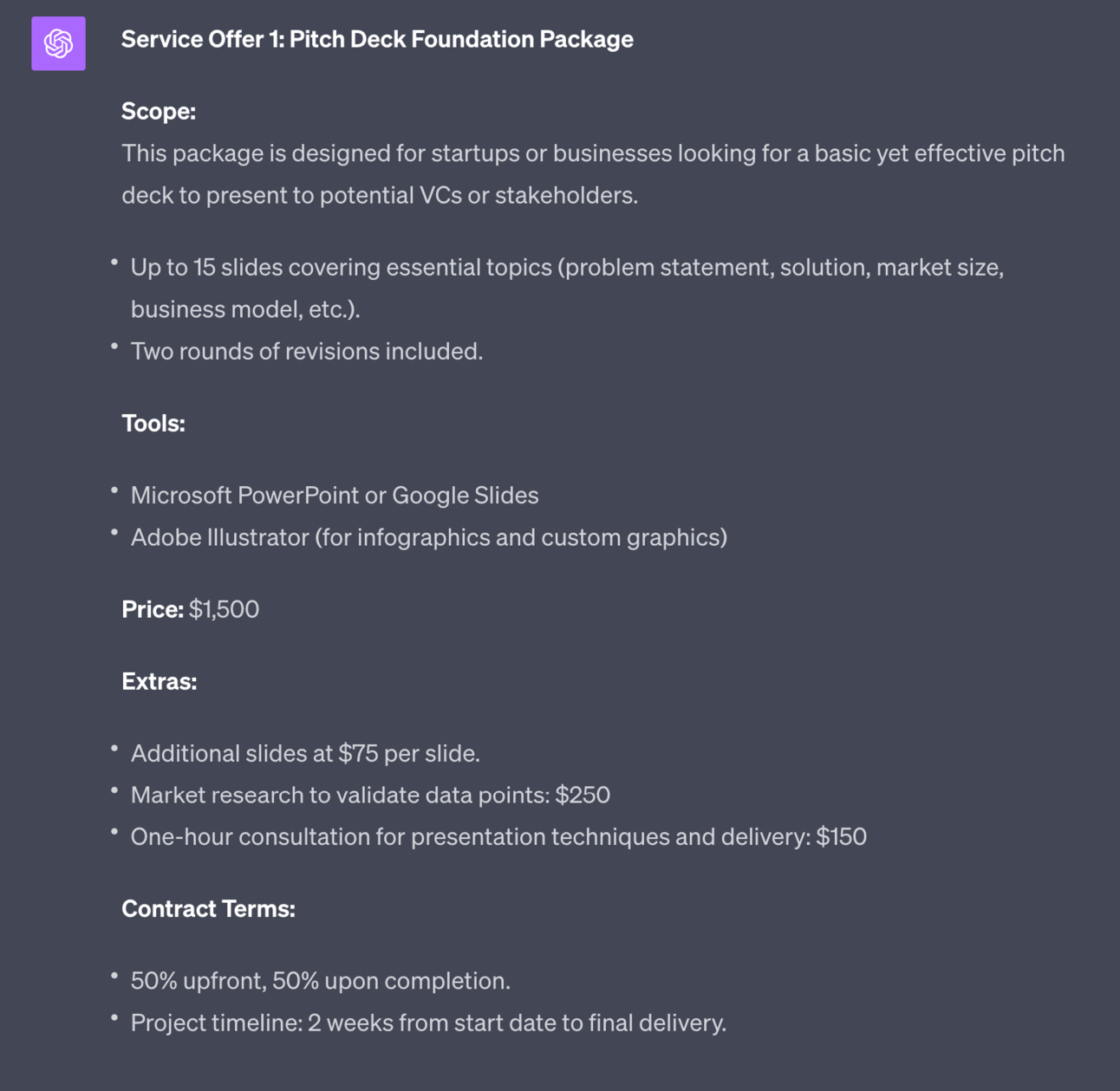
This is one of the 3 standardised offerings that ChatGPT gave me.
Notice how the scope and pricing are standard. Additional work (here extra slides) is priced in up-front at $25. Everything is set and standardised.
Use your own knowledge of what customers want to fill in the [list common problems] as this is where you make sure you are providing a solution to a problem that exists!
2. Publish standardised services
Upwork generally works via clients posting their requirements and us pitching for the work.
However, now that we have a standardised product we need clients to come to us. We’re not bending to their needs, they are bending to ours.
Upwork has a feature called Projects where we can post our standardised services:
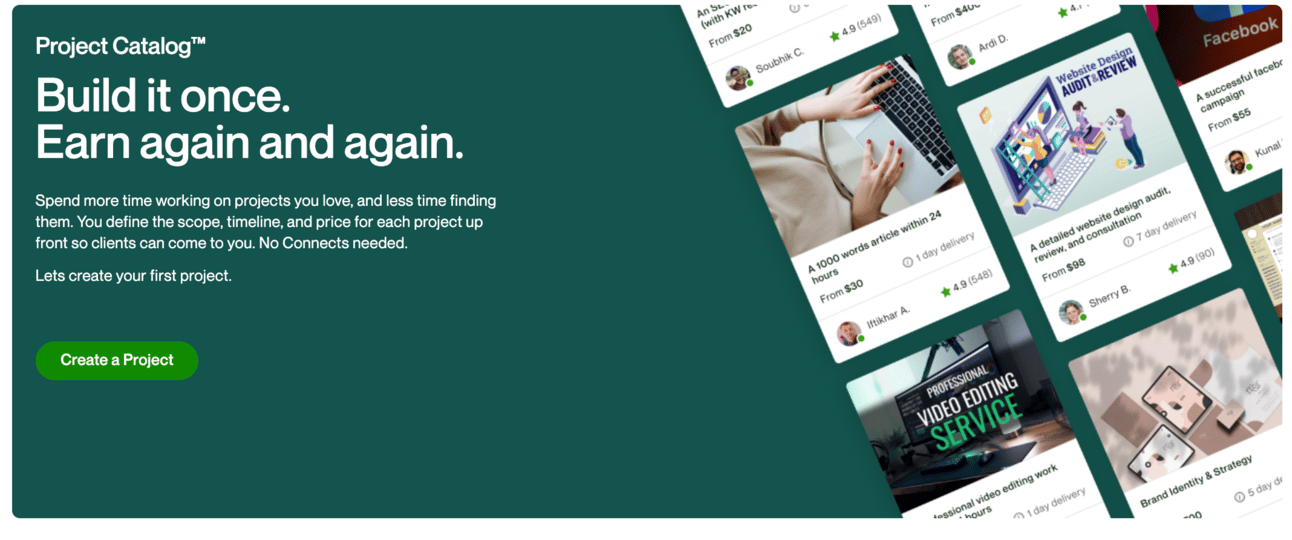
You can find Projects from your profile page or directly here.
Walk through the process on Upwork, using ChatGPT’s suggested standardised offerings and your own experience to craft a Project.
As well as publishing here on Upwork now that you have a standardised offering you can go to other platforms.
The first I’d recommend is Fiverr. Both Fiverr and Upwork are similar in that they allow freelancers to both post standard packages and bid for work.
Upwork is more focused on bidding, Fiverr is more focused on standardised packages. Similar platforms with a different primary focus.
We started with Upwork because of this. We needed to start bidding with ad hoc work and doing client gigs so that we could work out what clients actually need.
Then and only then do we standardise! And once standardised we can add Fiverr as well as Upwork.
The details of setting up a Fiverr account are very similar to the work we’ve done already building a profile on Upwork. You can copy most of the work you’ve done already over into Fiverr and get started quickly. I’d recommend therefore setting up on both Upwork Projects and Fiverr for expanded reach.
3. Retainers
An optional extra is to convert our service from a one off into ongoing fulfilment.
In freelancing we tend to call this a retainer - an agreement to continue certain recurring work month after month.
We can pick up retainers without having first standardised our service. In fact lots of freelancers do. The risk of this though is that poorly scoped retainers can lead to overload.
For example let’s say I have 5 clients on retainer but the scope of the monthly work is ill-defined. Most of the time this will be no problem. But there will be months when suddenly all your clients will need extra or special work for whatever reason and you get overloaded. Quality drops and no-one is happy.
If we instead add standardised retainers to standardised service offerings we know exactly what the work is each month and how much we can handle.
Use this prompt below the standardised service offering description of your choice:
Create a retainer offer for this standardised service offer
The retainer should have standardised pricing, scope, contracts,limited customisation and extras
Provide 3 pricing levelsPrompt Output:
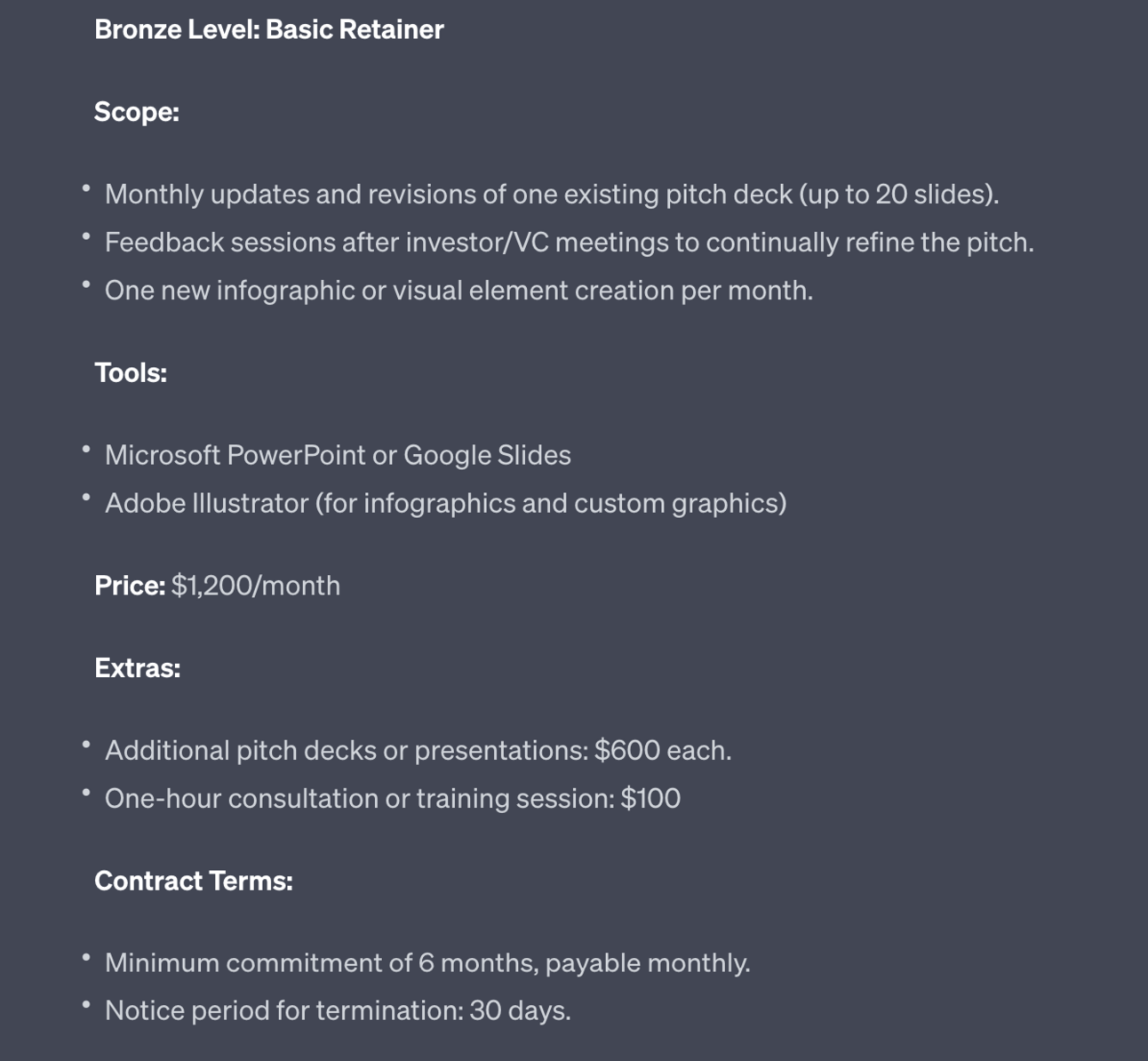
The prompt generates 3 different levels of retainer - pictured above is the first of three.
The pricing generated will be relative to each level, not to your actual value. Therefore make sure to adjust pricing so that it makes sense to your business growth.
To do so work out how many hours the work will maximally take per month, assuming the client fully uses your service. Multiply that by your hourly rate.
I’d then recommend adding a discount to recognise the fact that this is steady retainer work. You spend less time chasing retainer work - you just get paid each month without having to pitch and close new clients. Therefore you want to incentive retainers by making them more cost effective for clients.
4. Outsourcing
Once you start to stack up standardised clients and retainers you should look at outsourcing elements of the work.
This is a huge topic but we’ll cover a basic method to get you started.
Below the same standardised service package description use this prompt:
Act as a business systems analyst
Generate an SOP for the described service offering
For each element provide substeps, timings and the type of role.
Include not only the operational elements of fulfilling the service but also onboarding, admin, customer service.
Break it down into a checklist in tabular format. Summarise time per section and at the end of the table.
After the checklist provide a list of the smallest number of contractors required to outsource the work, noting for each which parts of the work they'll supply. For each provide time required.Prompt Output:
This prompt will generate a Standard Operating Procedure (SOP) for your service offering:
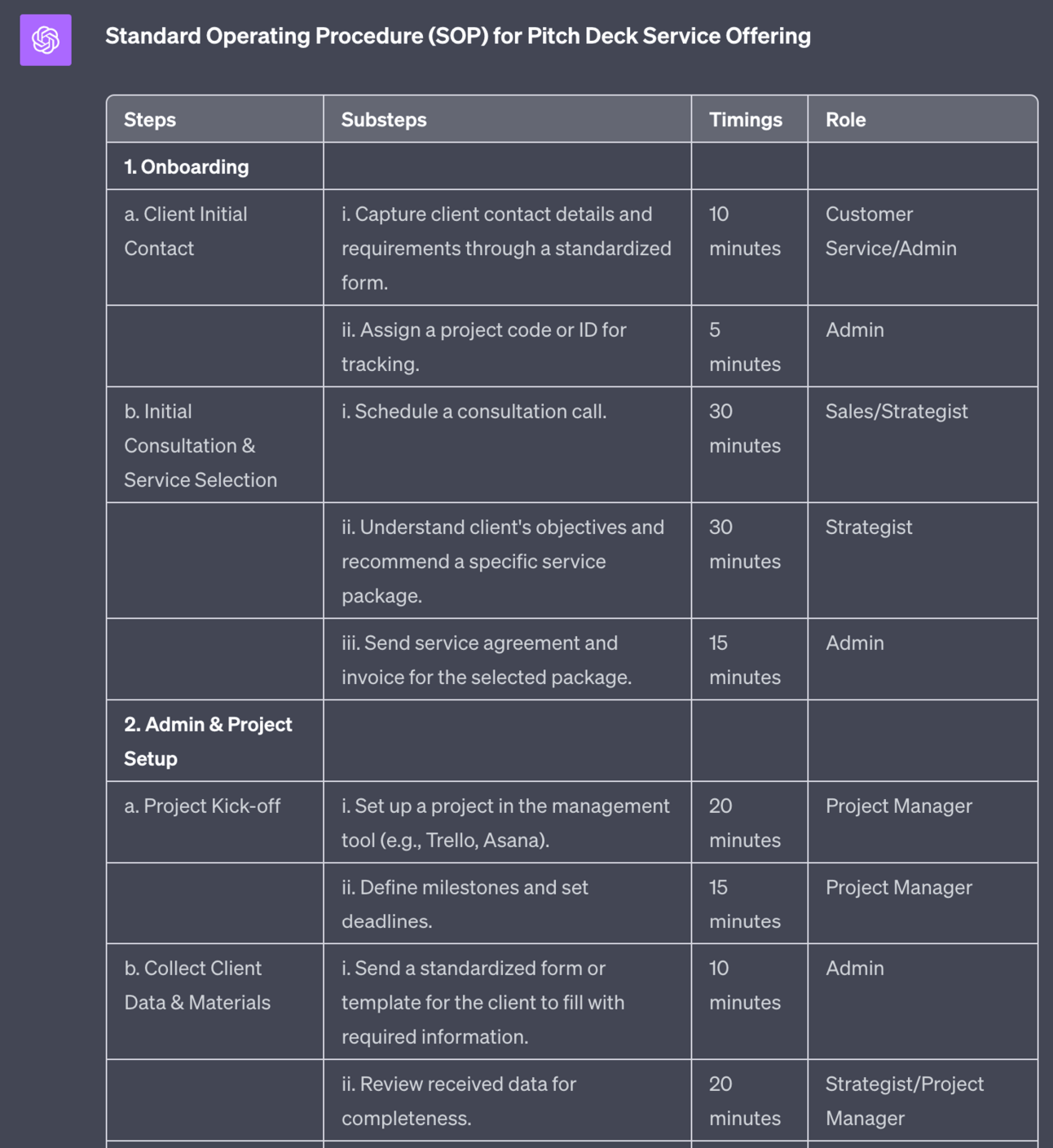
It will also work out what the roles required are:
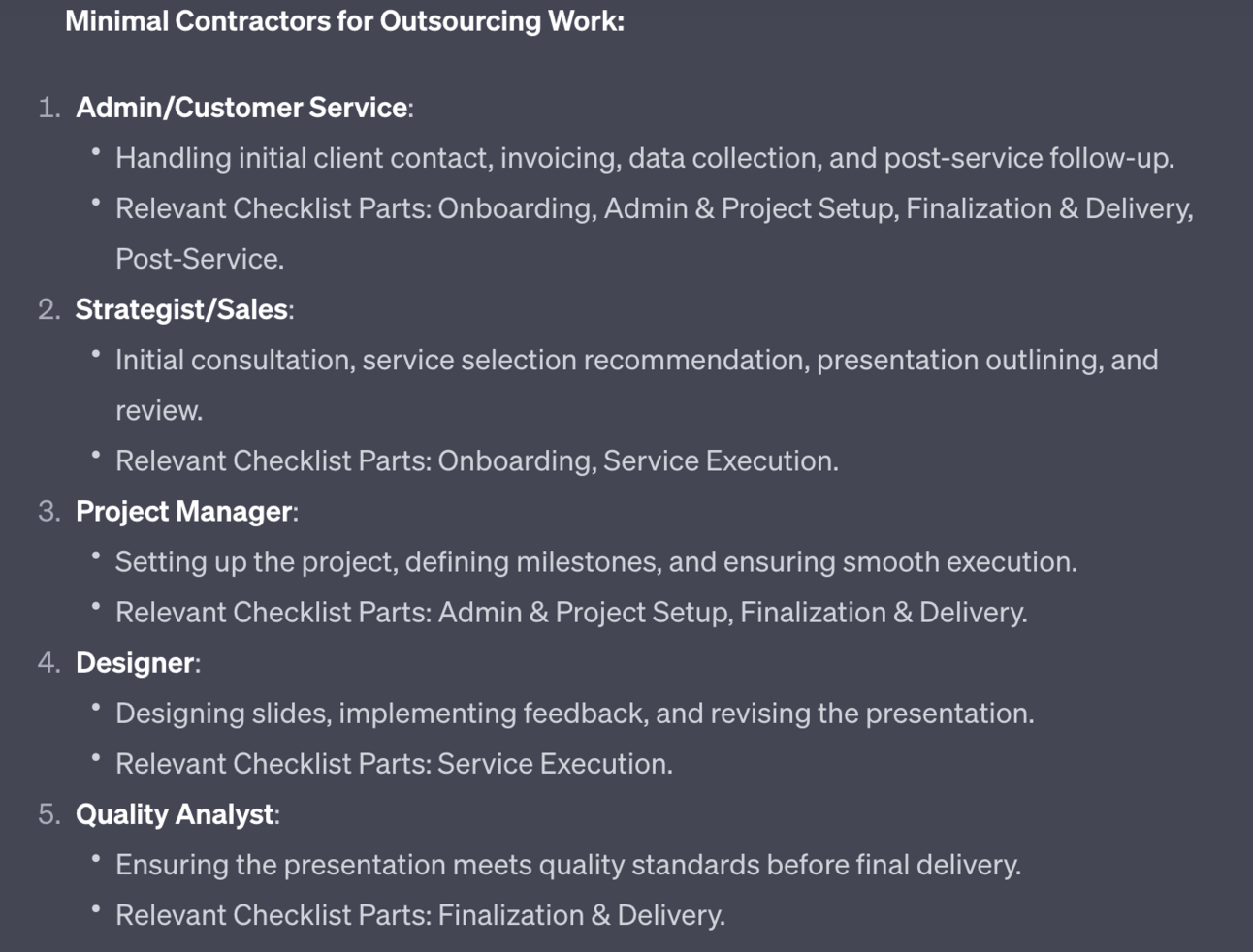
I’ll automatically reduce the number of roles to the lowest number possible but you can use common sense to combine roles. For instance in this I’d combine Admin, Project Management and Quality Analyst into one role. Sales is a one role. And design is one role.
Use this as a jumping off point to structure outsourcing.
And where do you outsource from? Upwork of course!
5. Premium Prompt - Converting to a Service Business
Now that you’ve found a freelance service that customers want you are in a great position to convert this into a business.
Thankfully I’ve written a whole Playbook on this.
Here’s everything you need in a nice neat:
You can skip the first Part (or review it but ignore the actions) as you’ve already completed that work by deploying a freelance service.
Pulling it together
Over this week we’ve leveraged Upwork to work out what we should be offering, started to secure initial clients, learned about their common problems and finally developed a standardised service offering.
You’re now in a place to continue to scale your freelancing service via standardised packages, retainers and outsourcing or flip it into a fully-fledged business.
A reminder of what we covered this week :
Part 1: Your freelance offer
Part 2: Building your freelance profile
Part 3: Securing your first freelance clients
Part 4: Marketing your freelance work
Part 5: Growing Your freelance business